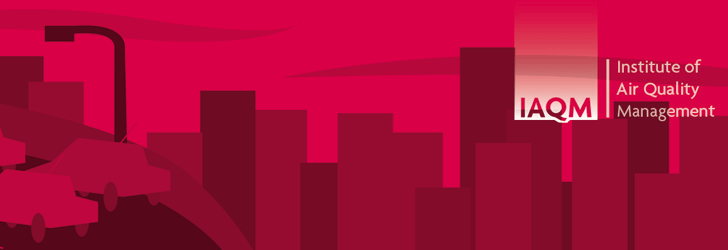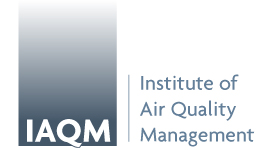The annual meeting of the Dispersion Modellers User Group will be taking place at Theatre Royal, Drury Lane, Covent Garden London. The meeting provides a great opportunity to hear from people at the forefront of dispersion modelling and really is a must attend for anyone involved in this field. It is of particular relevance to:
- Consultants engaged in air quality modelling
- Environment regulators
- Local authority officers engaged in local air quality review and assessment
Speakers
-
New! Michael Bull (Arup): Observed variations in modelling studies for cumulative impact assessment
This presentation examines how four separate modelling studies in the same area led to rather different conclusions regarding air quality. It notes that whilst input data used in the studies were largely consistent, other user choices changed the results considerably and led to a very different view of future air quality at the same location. It will consider how modellers can work to get to more consistent conclusions and also considers our current approach to cumulative impact assessment and questions if this can be improved.
- Sean Beevers (Kings College): Update of progress with development of a hybrid personal exposure model
Kings College are developing a London hybrid exposure model to investigate the exposure of Londoners using knowledge of how, where and when they travel. The model combines indoor and outdoor concentrations at home/work/other, with exposure in different micro-environments, such as walking, cycling, on the train/tube, in-car and on the bus. In addition to human exposure, air quality dose to represent the combination of air quality concentrations and breathing rate is also calculated. This talk will describe the model's development, the results of exposure calculations in London and how a model of this kind may influence epidemiology research and air quality policy.
- Rebecca Morris (Ricardo AEA): Modelling the local mortality burden of PM2.5
The presentation will summarise the PCM model, focussing on PM2.5 providing an overview of an application of this modelling data, specifically mortality burden estimations of PM2.5 at a local level.
The PCM model is used as an input to the annual air quality assessments required by the EU ambient air quality directive and to support UK air quality policy development. Estimates of ambient annual mean PM2.5 concentrations are calculated using a pragmatic model that includes contributions from a wide range of sources in order to get close to mass closure.
COMEAP have published reports and statements that provide methods that can be used to estimate the mortality burden of current PM2.5 air pollution at a UK scale and at more local scales. The fraction of mortality attributable to particulate air pollution has been included as one of the indicators within the Public Health Outcomes Framework. Public Health England have recently published estimates of the mortality burden of PM2.5 at a local level.
- Ben Marner (AQC): Linking ADMS with microsimulation models
The presentation will cover common issues encountered when using the outputs from microsimulation traffic models and instantaneous emission factors as input for dispersion modelling, with a particular focus on predicting concentrations for comparison with the annual mean air quality objectives. It will also present the results from a detailed study which combined microsimulation and dispersion modelling in order to investigate traffic management options to improve air quality within an AQMA. The implications from this study are that average-speed emission factors cannot be used to assess the effects of certain types of traffic interventions.
- James Tate (Leeds University): Mapping vehicle emissions through urban streets and intersections using traffic microsimulation and instantaneous emission models
Microscopic traffic simulations coupled with instantaneous emission models are able to assess the environmental impact of traffic networks, management strategies and fleet renewal at a high temporal and spatial resolution. The approach couples traffic microsimulations, which model the movement of individual vehicles through a well specified study area road network, with instantaneous vehicle emission models that provide second-by second fuel consumption and tail-pipe emission predictions. As the traffic microsimulations consider all the vehicle movements second-by-second (stationary, accelerating/ decelerating, cruising), unlike alternative more aggregate approaches, they can study congestion effects, stop-start driving and local traffic flow conditions. The highly spatially resolved predictions also mean the vehicle emission source strength can be mapped through urban streets and intersections.
The mapping results will be of interest to atmospheric modellers simulating the dispersion of vehicle emissions within City streets e.g. canyon environments (local-scale). Visualising the variations in emissions can also support traffic Network Managers and Policy Makers working to minimise the environmental and health impacts of road transport emissions, helping them understand which locations have the highest source strengths, so facilities where people congregate and are exposed to emissions such as Bus stops and Pedestrian crossings can be located away from emission ‘hotspots’.
- Christine McHugh (Amec Foster Wheeler): Comparison of Air Quality in World Cities
The threat of fines from the EC for the UK’s non-compliance with the limit values for NO2 and recent suggestions in a number of media outlets that London is one of the most polluted cities in the world, mean that air quality is a hot topic. A recent AMEC report, published by the GLA to coincide with London Mayor Boris Johnson's appearance before the Parliamentary Environmental Audit Committee in September, has helped put the UK’s air quality in context. A new ranking system was developed to compare air quality in the 36 cities worldwide for which sufficient data is available, and three new indices developed to compare air quality. The rankings go beyond previous comparisons in terms of the breadth of cities compared, the use of a multi-pollutant index and its use of recent data.
- Dr Scott Hamilton (Ricardo AEA): Regional and city scale modelling of air quality in Saudi Arabia
Ricardo-AEA are currently providing an integrated air pollution management system to the ArRiyadh Development Authority in Saudi Arabia. As part of the project we are developing a modelling platform for use by ADA officials in Riyadh which uses WRF, CMAQ, AERMOD and a GIS based road traffic emissions coupled with an AERMOD kernel based road dispersion model. A key aspect of the work has been the use of open source toolsets to deliver the modelling solution. The modelling platform will integrate with the automatic monitoring network we are currently building and will be used to estimate city wide population exposure to air pollution from natural sources, road traffic and industry. This session will introduce the project as a “work in progress” whilst describing the modelling methods and tools used/developed thus far.
- Dr Martin Seaton (CERC): Advances in the treatment of street canyons and urban canopy flow in ADMS-Urban and ADMS-Roads
In urban areas, high traffic flows and congestion lead to large pollutant emissions. The resultant concentrations depend on the building geometry. Wind speeds at ground level reduce where there are densely packed buildings and street canyons, resulting in poor ventilation and increased concentrations.
The Gaussian-type dispersion model ADMS-Urban has been modified to take better account of these effects. It now includes a spatially-varying urban canopy flow module in which the flow depends on parameters that vary on a neighbourhood-by-neighbourhood basis, such as displacement height, building spacing, canyon aspect ratio and surface roughness. It also in includes a more advanced street canyon module that can account for individual traffic lane sources and dispersion along the street, across the street, within the recirculation region, between the buildings, and out of the top of the canyon. The presentation will describe these new developments including validation using concentrations from the network of continuous monitoring sites in London and Hong Kong.
Cost
- IES/IAQM member registration – £100
- Non-member registration – £120
Address
Theatre Royal, Drury Lane, Catherine Street, London, WC2B 5JF


